Anatomy of the Knee – The knee is the body’s largest joint. It’s the place where three bones meet: the tibia, the femur and the patella. The knee is a “hinge” joint. It allows the leg to bend in one direction only. Let’s take a closer look at the main parts of the knee’s anatomy.
Conditions
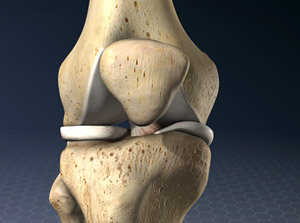
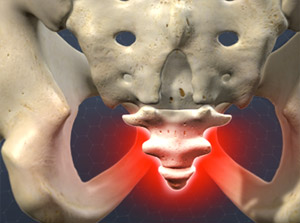
Coccydynia – This condition is an inflammation of the tip of the tailbone, called the coccyx. It causes pain and tenderness between the buttocks.
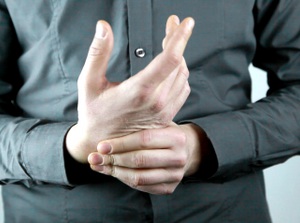
Complex Regional Pain Syndrome (CRPS) – This chronic condition, also known as reflex sympathetic dystrophy, is an unexplained feeling of pain and discomfort that most commonly affects an arm, leg, hand or foot. Often, it begins in the hand or foot and then spreads to affect the entire limb.

Degenerative Joint Disease of the Hip (Osteoarthritis of the Hip) – This condition is a wearing away of cartilage in the hip joint caused by arthritis, which can develop because of trauma, infection, age or autoimmune disorders.
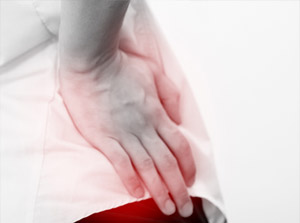
Hip Bursitis – This condition is an inflammation of the trochanteric bursa, a fluid-filled sac that lies between the femur and the iliotibial band, a thick, wide tendon on the outside of the hip joint. This condition can cause pain and swelling on the outer side of the hip.
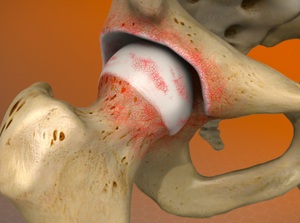
Inflammatory Arthritis of the Hip – This condition is an irritation of the hip joint that can cause inflammation, pain, and limited mobility. Unlike osteoarthritis, which occurs from a wearing away of cartilage on the ends of connecting bones, inflammatory arthritis is a disease of the immune system that can affect multiple joints.
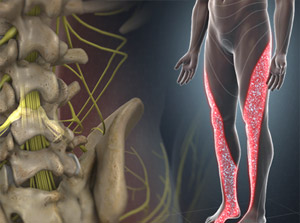
Lumbar Radiculopathy (Sciatica) – This condition is an irritation or compression of one or more nerve roots in the lumbar spine. Because these nerves travel to the hips, buttocks, legs and feet, an injury in the lumbar spine can cause symptoms in these areas. Sciatica may result from a variety of problems with the bones and tissues of the lumbar spinal column.
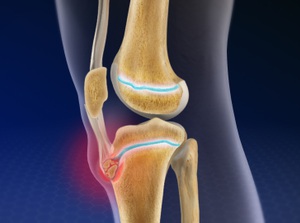
Osgood-Schlatter Disease – This overuse injury is an inflammation that occurs at the point where the patellar tendon attaches to the tibia. It most commonly affects adolescents. One or both knees may be affected.
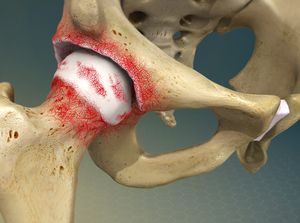
Osteoarthritis of the Hip – Osteoarthritis, also called degenerative arthritis, is a gradual breakdown of cartilage in the joints. Cartilage is a tough, flexible connective tissue that protects the ends of bones in the joints. Osteoarthritis is common in the hip because the hip bears the weight of the body. Osteoarthritis of the hip can severely impact a person’s lifestyle.
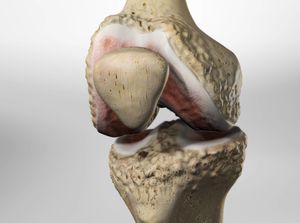
Osteoarthritis of the Knee – Osteoarthritis, also called degenerative arthritis, is a gradual breakdown of cartilage in the joints. Cartilage is a tough, flexible connective tissue that protects the ends of bones in the joints. Osteoarthritis is common in the knees because the knees bear the weight of the body. Osteoarthritis of the knee can severely impact a person’s lifestyle.
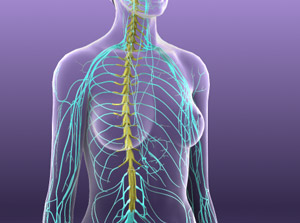
Peripheral Neuralgia – This painful condition results from damage to the peripheral nervous system – the nerves that travel from the spinal cord to the limbs and organs.
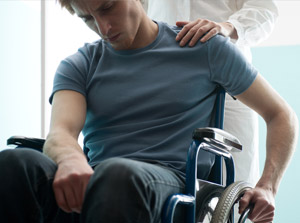
Phantom Limb Pain – This condition, common among amputees, is a painful sensation that seems to originate in a missing limb. It is different from stump pain, which is pain in the stump of an amputated limb generally caused by overuse or a poorly-fitting prosthesis.

Post Laminectomy Syndrome – Post laminectomy syndrome, also called failed back syndrome, is a continuous and chronic pain that can develop after certain types of back surgery.
Procedures
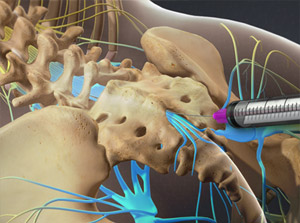
Caudal Epidural Steroid Injection – This outpatient procedure is an injection of a steroid-anesthetic medication through an opening in the sacrum. The medication can reduce swelling and inflammation of irritated spinal nerves. The injection takes only a few minutes to complete.
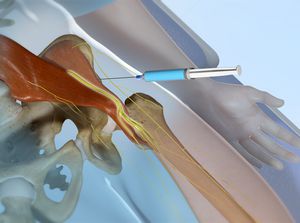
Fascia Iliaca Block – This procedure is performed to block pain signals from traveling along the femoral nerve from the thigh or knee to the brain. It is commonly used to alleviate pain that can appear after certain leg surgeries such as total knee replacement.
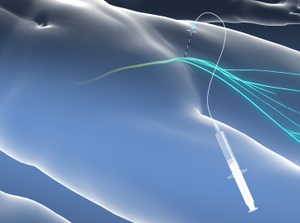
Femoral Nerve Block – This outpatient procedure numbs the leg with an injection of local anesthetic. Typically, it is used before or after surgery on the thigh or knee.
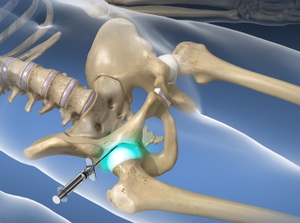
Fluoroscopic Guided Hip Injection – This non-operative, outpatient procedure is designed to provide relief for patients with arthritis of the hip joint. The technique allows the physician to inject numbing and anti-inflammatory medications with maximum accuracy.
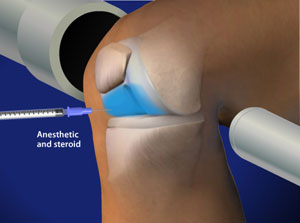
Fluoroscopic Guided Steroid Injection for Knee Pain – This non-operative, outpatient procedure is designed to provide relief for patients with arthritis of the knee. The technique allows the physician to inject an inflammation-reducing steroid with maximum accuracy.
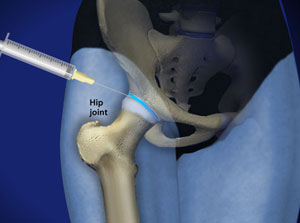
Joint Injection: Hip – This outpatient injection procedure relieves hip, leg or buttock pain caused by arthritis or other damage to the hip joint.
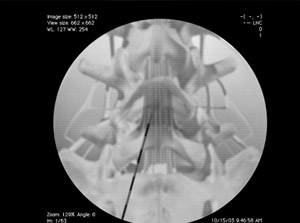
Lumbar Epidural Steroid Injection – This injection procedure is performed to relieve low back and radiating leg pain. Steroid medication can reduce the swelling and inflammation caused by spinal conditions.

Lumbar Epidural Steroid Injection (without contrast) – This injection procedure is performed to relieve low back and radiating leg pain. Steroid medication can reduce the swelling and inflammation caused by spinal conditions.
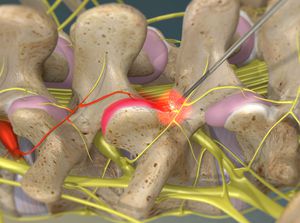
Lumbar Radiofrequency Neurotomy – This minimally-invasive procedure, also called radiofrequency (RF) rhizotomy, reduces or eliminates the pain of damaged facet joints by disrupting the medial branch nerves that carry the pain signals. This procedure is performed with local anesthetic.
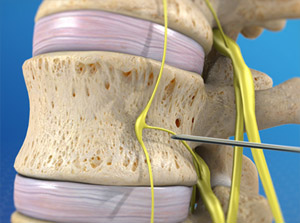
Lumbar Sympathetic Block – This procedure is performed to relieve leg pain caused by complex regional pain syndromes, which may develop after an injury to a joint or limb. Usually a series of injections are needed to treat the problem.
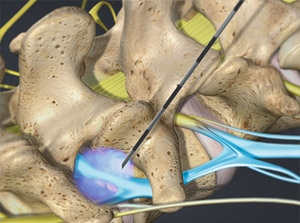
Lumbar Transforaminal Epidural Steroid Injection – This outpatient procedure is an injection of a steroid-anesthetic medication. The medication can reduce swelling and inflammation of irritated spinal nerves. This procedure is performed to relieve pain in the lower back and pain that radiates from the back to the legs. The injection takes only a few minutes to complete.
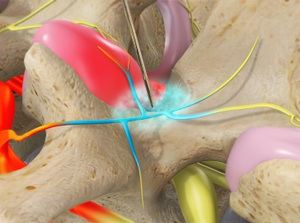
Medial Branch Block – This diagnostic procedure is performed to identify a painful facet joint. The facet joints are the joints between the vertebrae in the spine. They allow the spine to bend, flex and twist.
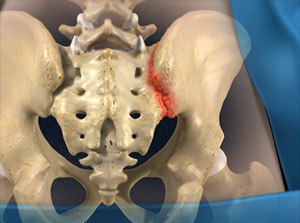
Sacroiliac Joint Steroid Injection – This injection procedure is performed to relieve pain caused by arthritis in the sacroiliac joint where the spine and hip bone meet. The steroid medication can reduce swelling and inflammation in the joint.
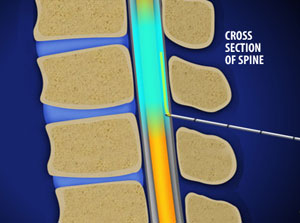
Spinal Epidural for Hip and Lower Extremity – This procedure uses an injection of anesthesia to numb the hips and lower extremities in preparation for a medical procedure. The patient remains awake and alert, and still has the ability to offer feedback to the operating physician.
